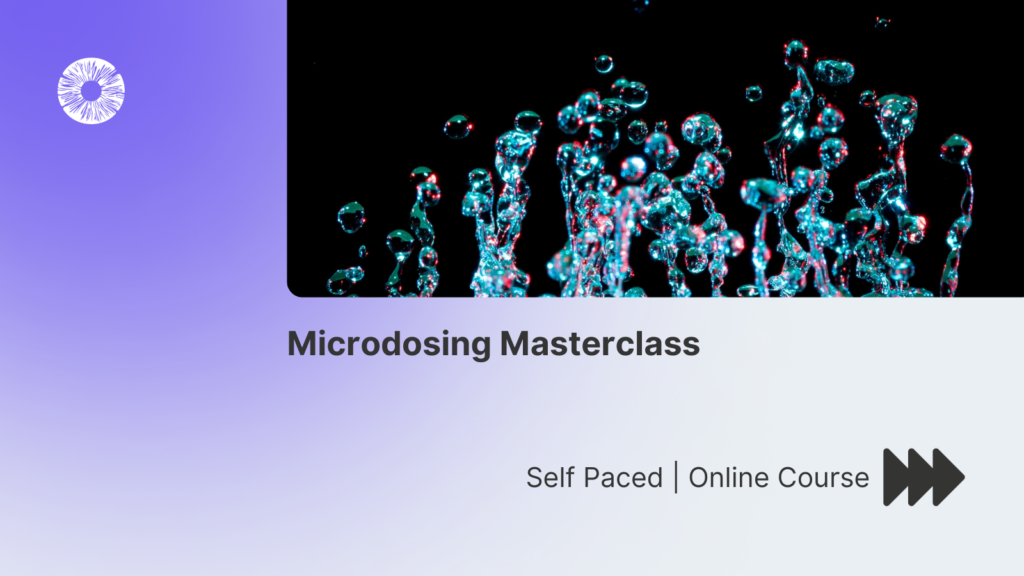Psychedelics, once heavily restricted for research, are now being rigorously tested through clinical trials to explore their potential therapeutic benefits. But how are women represented in the search to uncover the efficacy of psychedelic medicines?
While the inclusion of women in psychedelic clinical trials is clearly important – both to understand the effects of these medicines on all genders as well as to develop effective treatments for conditions that primarily affect women – women have historically been underrepresented in clinical trials.
Why has this become the norm? Is it because women aren’t as available as men to participate in studies? Or perhaps women don’t suffer from the illnesses being studied as often as men?
Spoiler: it’s neither.
The Clinical Trial Process – An Overview
The clinical trial process is, largely, a series of research studies that evaluate the safety and effectiveness of new drugs, treatments, or medical devices on human subjects. To fit into a pharmaceutical model, a.k.a. develop a drug or treatment protocol that clinicians can prescribe and health insurance will cover, psychedelic medicines must follow the same clinical trial process that all new drugs and treatments undergo.
If it seems like there’s a new clinical trial announced each week – from psilocybin for depression to MDMA for PTSD to LSD for cluster headaches – it’s because these trials are crucial (and non-negotiable) for biotech companies seeking to bring their compounds and modalities to market. These trials aim to prove the effectiveness of a particular compound or method of use, and ultimately secure the holy grail of U.S. Food and Drug Administration (FDA) approval.
Clinical trials are conducted in several phases, each with specific goals:
Phase 1: A small number of healthy volunteers receive the drug or treatment to evaluate its safety and determine the appropriate dosage.
Phase 2: A larger group of volunteers with the condition that the drug or treatment is designed to treat receive the treatment to assess its effectiveness and side effects.
Phase 3: An even larger group of volunteers with the condition receive the treatment in a randomized and controlled study to confirm its effectiveness and monitor side effects.
Phase 4: The drug or treatment is approved and marketed for public use, and ongoing studies continue to monitor its long-term safety and effectiveness.
Throughout the clinical trial process, participants are closely monitored and data is collected to evaluate the drug or treatment’s safety, efficacy, and potential side effects.
A Brief History of Women in Clinical Trials
As hard as it may be to believe, it wasn’t until 1993 that women and minorities were required to be included in any NIH-funded clinical research. In 1977, the FDA recommended excluding women of childbearing age from Phase 1 and Phase 2 trials, even if they used contraception, were single, or had husbands with vasectomies.
The objective was to avoid unforeseen birth defects in babies born to women in clinical trials. The result, however, is that most currently prescribed medications were approved by the FDA before 1993 – which means they’re prescribed to women and men at the same dose and were unlikely to have adequate representation of women in their clinical trials.
Francesca Minale, President of Vici Health Sciences and an expert at working with the FDA to bring new medications through clinical trials to approval, says the lack of gender differentiation in dosing persists despite known differences in disease states by gender.
“There is a lack of incorporation of gender data and generic specific dosing and administration on FDA-approved prescription labels,” said Minale. “This gender bias in the research needs to be addressed, especially as it is well documented that many diseases, such as mental health or heart disease, are recognized to have gender differences.”
Excluding women from early-stage clinical trials led to a vast shortage of data around how today’s drugs affect women – a knowledge gap that scientists are still trying to fill. Even though the NIH now requires women to be included in all clinical research funded by the government agency, there are still many criteria that make it difficult for women to participate in clinical trials.
Women in Psychedelic Clinical Trials
The results of clinical trials play a critical role in informing regulatory decisions about whether to approve new medicines for widespread use. However, in the past, clinical trials often failed to accurately reflect the populations they intended to serve – especially women.
This is actually a pretty big problem, because women experience adverse drug reactions nearly twice as often as men. Women consistently manifest elevated blood concentrations and longer elimination times of drugs, unrelated to differences in body weight.
As psychedelic clinical trials seek to determine the safety and efficacy of new psychedelic treatments, it’s imperative we learn from past mistakes. A recent study identified 86 medications approved by the FDA that are more likely to cause complications for women than men.
But yet it’s common practice to prescribe equal doses of medications to men and women – contributing to the overmedication of women and female-biased adverse drug reactions.
In fact, because women were excluded from many pivotal clinical trials, many drugs have been withdrawn from the market or have had their labels changed to include warnings about increased risks for women after they were already approved by the FDA and widely used.

Modern Barriers to Women’s Participation in Clinical Trials
Amy Reichelt, Ph.D., Director of Neuropharmacology at Cybin explained, “In early-stage clinical trials (i.e., Phase 1) where drugs are tested in healthy volunteers, key inclusion/exclusion criteria can bias genders tested.”
Typical protocol wording includes: “Women of childbearing potential (WOCBP) must be non-lactating and have a negative pregnancy test. Females who are not WOCBP must be either surgically sterile or post-menopausal.” Reichelt said. “This immediately excludes a number of women, particularly when age ranges of trials can have cut-offs of 55-60 years.”
Moreover, it is often written into the trial protocol that a woman of childbearing potential must agree to practice an effective means of birth control/contraception during their participation in the clinical trial, and following the trial for several months. This could impact individuals who are trying to start a family for many months, again discouraging women from participating.
Reichelt pointed out, “Later stage trials (i.e., Phase 2b, Phase 3) can be less restrictive as they are testing in patient populations and initial safety tests are fulfilled in the healthy volunteers in early stage trials, but still there are often requirements for contraceptive use that fall upon the women’s responsibility.”
In addition, body weight restrictions may also prevent women from participating if they are below the protocol threshold i.e., less than 60 kg/132 pounds.
Biological Gender Differences and Why They Matter
The differences between the sexes in circulating levels of sex hormones, such as testosterone and estradiol, can affect pharmacokinetic or pharmacodynamic parameters – which help determine how the drug is absorbed, distributed and metabolized in the body, and how the drug affects the body, Reichelt explained.
Body composition can impact how a drug is processed and eliminated from the body, too. “Women typically have a lower body weight than men, so when the same dose of a drug results in a higher level of drug circulating by body weight. As women generally have a greater body fat content than men, some drugs can be distributed through the body differently,” said Reichelt.
The impact of sex can differ across life stages, too. After menopause, the reduction of estrogen can alter aspects of brain plasticity. Preclinical studies have shown that at the neuronal level, estrogen can increase the density of dendritic spines.
This brain phenomena may subtly affect mood and cognition during a woman’s estrous cycle, and could affect clinical outcomes. More studies are needed to fully understand these impacts, especially when it comes to psychedelic medicines which are closely tied to brain plasticity and dendritic spines.
For Natalie Gukasyan, M.D., Medical Director of Psychedelic and Consciousness Research at Johns Hopkins University School of Medicine, the physiological differences between men and women in the psychedelic experience and outcomes is an area that requires further investigation.
“We don’t yet have a clear understanding of how different biological factors, such as hormonal fluctuations, including menstrual cycle and menopause, may impact the psychedelic experience. However, it does seem that psychedelics may have an impact on menstrual function,” she said.
Gukasyan co-authored a recent study published in the Journal of Psychoactive Drugs on the impact of psychedelics on menstrual function. While the study looked at only three women ranging from 27 to 34 years of age, the results were significant enough to warrant more research.
“Although phenomena related to menstrual and reproductive function have been largely overlooked in the psychedelic literature to date, these effects may have therapeutic utility and warrant further study,” the study concluded.
Where To Go From Here
In the field of psychedelic medicine, where compounds are being extensively studied scientifically for the first time, the underrepresentation of women in clinical trials could have serious consequences for the safety and efficacy of these treatments. Without data on the experiences of women, it is impossible to accurately assess the potential benefits and risks of these new medicines before bringing them to the masses.
By working to increase the representation of women in clinical trials for psychedelics, we can help to ensure that these treatments are developed in a way that is safe, effective, and equitable for all.
Thankfully, many psychedelic clinical trials are moving forward with this ethos. For example, two-thirds of the participants in the MAPS’ Phase 2 and 3 clinical trials of MDMA therapy for the treatment of PTSD were women.
Rick Doblin, the founder of MAPS, said, “When it comes to PTSD, we talk a lot about the veterans, but it’s mostly women who are sexually abused or have childhood traumas that have PTSD. I think that the media attention on veterans sort of distracts people from the understanding that it’s mostly women that we are treating. Two-thirds of the people in the [MAPS] study are women.”
So far, MAPS has administered MDMA to approximately 1,700 human subjects. Their recent Phase 3 clinical trial of MDMA-assisted psychotherapy for PTSD also included an assessment of gender identity beyond the binary male and female gender assigned at birth – an important distinction since transgender and gender diverse (TGD) people experience PTSD at higher rates than the general population.
Other groups conducting clinical trials actively seeking women participants include Psycheceutical Bioscience, which has partnered with clinical research organization (CRO) iNGENū in Australia to conduct its Phase 1 and Phase 2 trials of a topical ketamine cream to treat PTSD.
“iNGENū takes gender balance in clinical trials very seriously and the diversity of participants is one of the key metrics we strive to achieve. We naturally want our clinical trials to recruit participants who closely match the intended population who will benefit from the drug when it is eventually approved,” said iNGENū CEO Dr. Sud Agarwal.
Women-Only Trials
While the inclusion of women in psychedelic clinical trials is critical to the success of this new paradigm in medicine, there’s also a whole realm of largely untapped research on the benefits of psychedelics for health conditions experienced only by women.
Felicity Pharma is a psychedelic biotech company focused on women’s health that’s secured a proprietary psilocybin-based drug for premenstrual dysphoric disorder (PMDD), a very severe form of premenstrual syndrome that affects up to 10 percent of women globally as well as postpartum depression.
Olivia Mannix, Felicity Pharma co-founder and CEO, said “We are passionate about transforming women’s healthcare. Women have been traditionally excluded from clinical trials because of hormonal fluctuations and general biological makeup. We are making a stand to develop female-focused therapeutics, where women will be the only patients used in trials.”


